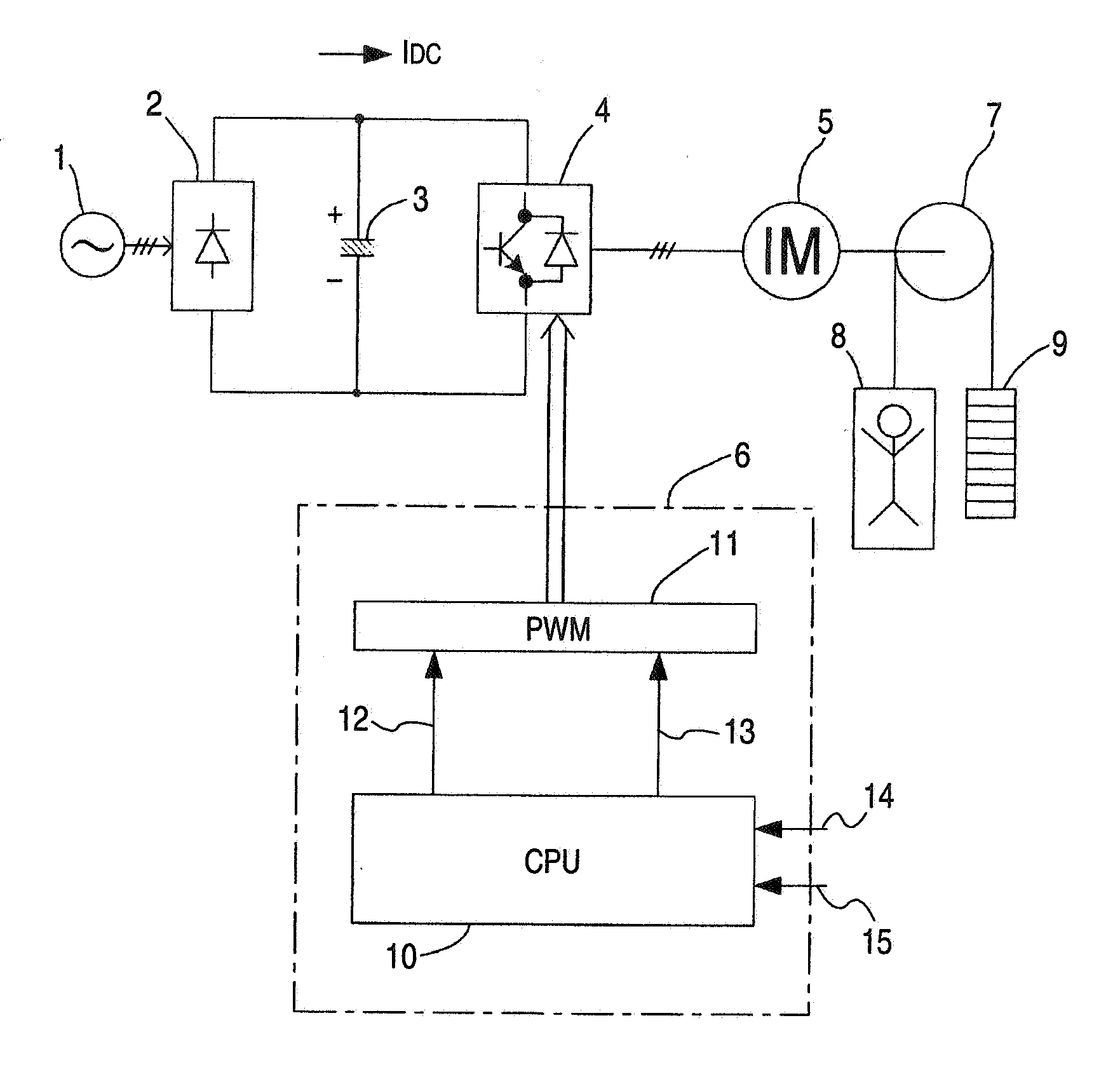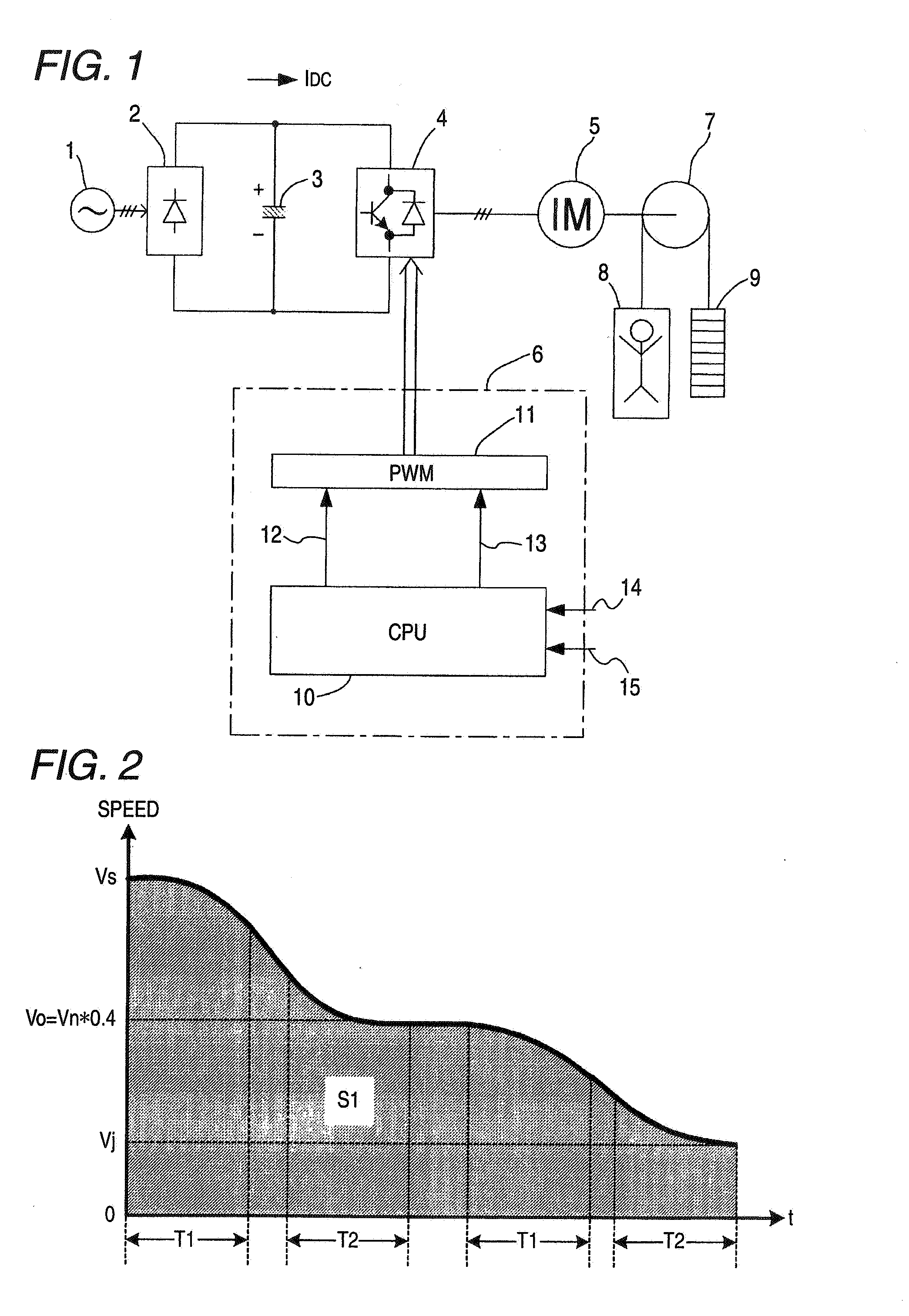Speed control method of elevator-purpose inverter and speed control apparatus thereof
- Summary
- Abstract
- Description
- Claims
- Application Information
AI Technical Summary
Benefits of technology
Problems solved by technology
Method used
Image
Examples
embodiment 1
[0046]FIG. 3 is a diagram of an apparatus arrangement for indicating an embodiment mode of the present invention.
[0047] In this embodiment mode, a speed control apparatus of an elevator-purpose inverter is arranged by an AC power supply 1, a rectifier 2, a capacitor 3, a voltage type inverter main circuit 4, an induction motor 5, a control apparatus 6, a winding machine 7, a passenger car 8, and a balance weight 9. The rectifier 2 converts an AC voltage of the AC power supply 1 to a DC voltage. The capacitor 3 smooths either a full-wave rectification voltage or a half-wave rectification voltage, which are rectified by the rectifier 2. The voltage type inverter main circuit 4 inverts the DC voltage smoothed by the capacitor 3 into an AC voltage having a predetermined frequency and a predetermined voltage. The induction motor is driven by the AC voltage produced by the voltage type inverter main circuit 4. The control apparatus controls the frequency and the voltage of the voltage ty...
PUM
 Login to View More
Login to View More Abstract
Description
Claims
Application Information
 Login to View More
Login to View More - R&D
- Intellectual Property
- Life Sciences
- Materials
- Tech Scout
- Unparalleled Data Quality
- Higher Quality Content
- 60% Fewer Hallucinations
Browse by: Latest US Patents, China's latest patents, Technical Efficacy Thesaurus, Application Domain, Technology Topic, Popular Technical Reports.
© 2025 PatSnap. All rights reserved.Legal|Privacy policy|Modern Slavery Act Transparency Statement|Sitemap|About US| Contact US: help@patsnap.com



